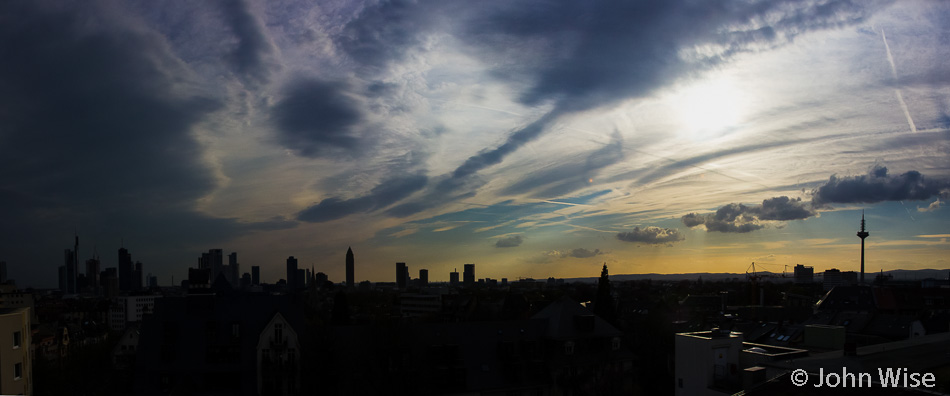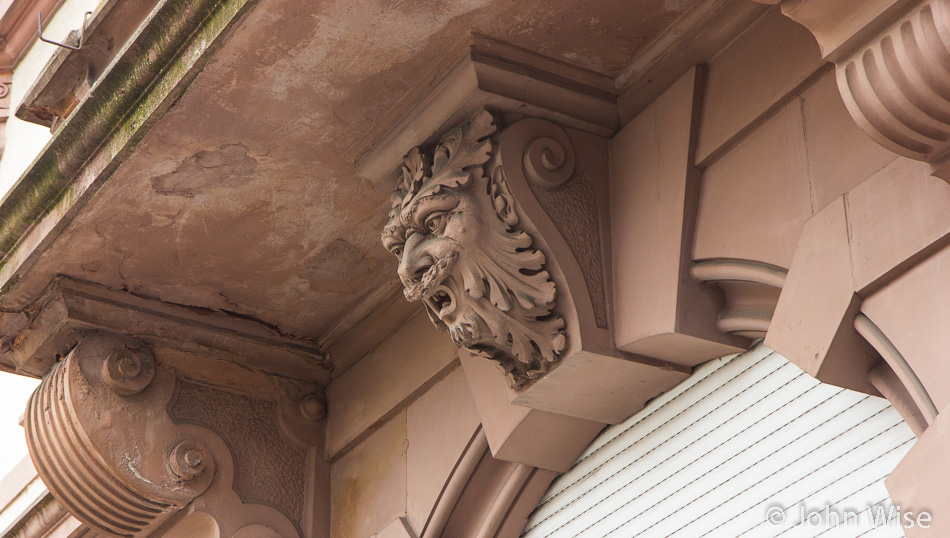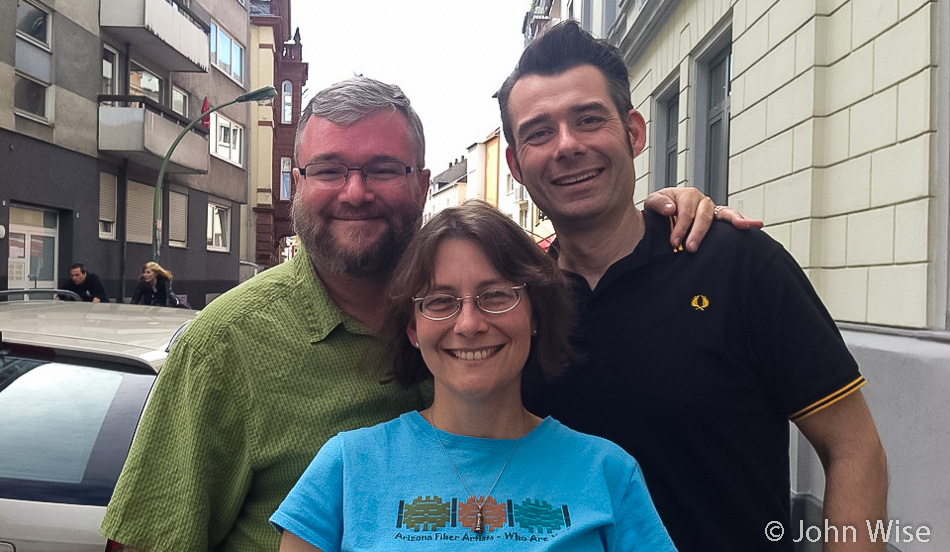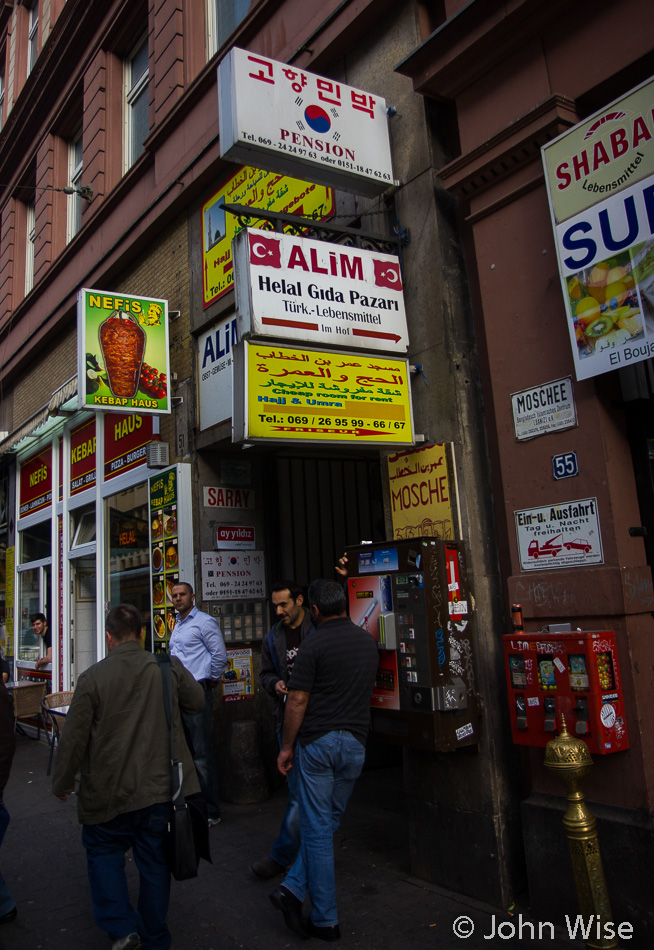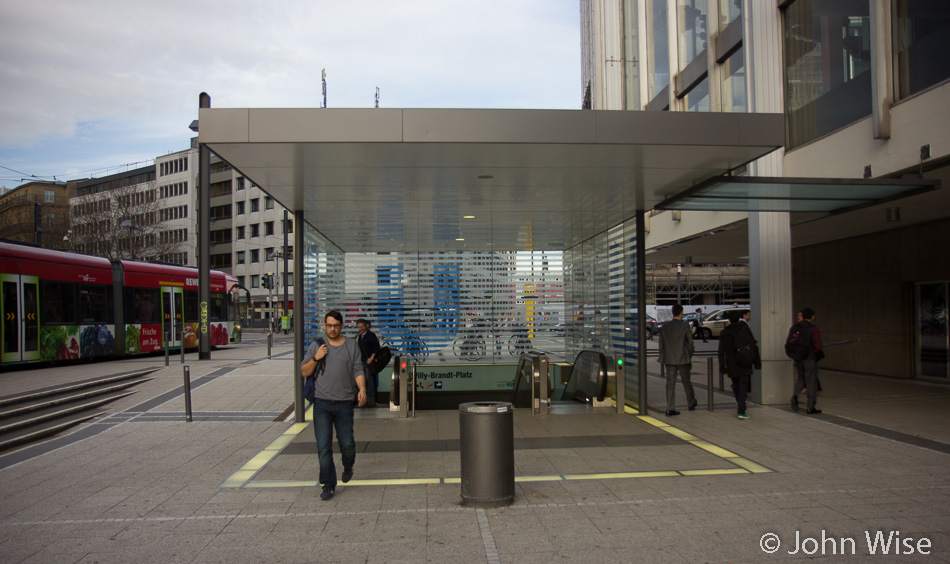
A peculiarity of this trip into Europe was that jet lag was at a minimum, and something was triggering an internal alarm clock that had us getting up every day between 6:00 and 6:15. Downstairs, a great breakfast awaits us, that is, if you love a traditional German breakfast. We pay our hotel bill as we check out. Strange, isn’t it that we pay in the morning because not only do they trust us to pay, but they have my passport number too, so I guess trust is secondary. The same goes for gas stations around Europe; no need to pay first, pump your gas, and then go pay. Sure, some will forget to pay, and others might think they can get away with it, but that’s only on rare occasions. We are now ready to go. Some construction along the way detours us through Leck and Süderlügen, but we are soon back on track, traveling the country roads to somewhere up north.

To our right, a sign grabs Caroline’s attention and she asks me to indulge her a detour. We are heading to Ladelund, heck I’d go just because the name sounds so nice – Laadaloond. What’s got her interested is the detail that tells us that a KZ-Gedenk und Begegnungsstätte (Concentration Camp Memorial and Meeting Point) is up the road. The sign doesn’t tell us how far away it is, and we’re not traveling with GPS; call us old school. In any case, even if we’d had a navigation device, we’d still be going because what it would have failed to let us know was that the site is closed on Mondays. Good thing this beautiful yard of crocus was in bloom to distract us, making the extra miles worth the effort.

With no fanfare or announcement of what was approaching, the border for Denmark was upon us. Strange thing, this EU construct, no more border checks, no encounter with law enforcement ready to examine orifices or search under the car for god-knows-what. Nothing more than a blue sky with wispy clouds and a warm sun that has allowed us to leave behind the winter gear. Nice way to be introduced to the Danish and their land.

After driving back towards the coast with no real destination in mind or on the map, we are soon pulling into the town of Høyer, Denmark. Cool, a windmill. Let’s get a closer look. Hey, the door is open, it’s a museum, and it’s open on Monday. Not only have we never been to Denmark before, but neither of us has been inside a windmill either. That’s about to be rectified.

On the way to Høyer, we’d seen gas stations offering fuel for €11 a liter, but we were certain they must be using gallons because we were paying €1.58 per liter in Germany, and there was no way that gas could be $68 a gallon in Denmark. Turns out that the Danes opted against the Euro and have stuck with their Krones. Now that we know the currency in use, we also learn that our Euros are taken everywhere in Denmark, but change is given in Krones. We pay for our admission before noticing the treats. I asked if they were something special to the Danish (of course, I was looking for Danishes) and was told that they were, in fact, Danish specialties. One of each was on order; the first was a stack of pancake-like wafers with jam between the layers. The other is pictured here; it is potato cake, a bit sweet, served with a big dollop of sour cream. With some hot coffee, we sat down to enjoy our first flavors of Denmark. I promise I won’t continue to note all the firsts experienced this day.

Upstairs is the museum with a focus on local life. Being a coastal community it only makes sense that the ocean and life next to it is the main feature. Høyer is a small village; the museum is appropriately small too. There are two floors to the place with an interesting look at how the encroaching and receding ocean has affected life here. I say receding because, like most of the coastal areas between the Netherlands and Denmark, much engineering has been done over the centuries to claim land from the sea that works determinedly to take it back.

These are the grinding stones in the windmill. Some years ago, the windmill was started up to see if things were still working, and sure enough, grain was turned into flour just as it had been so many years ago. Back in the day, it was able to push out 600 kg (1300 pounds) of flour a day; I wonder if it makes more money now as an attraction or back then when it was hard at work.

When the wind blows, the blades on the mill allow for these gears to be engaged, starting up the process of turning all of the elements that are required to work. The history on display is intriguing to us; we are delighted to be here, and if we had a wish, it would be to visit again when the mill is working. All but the very top of the windmill is open to our exploration. We learn more about the operation of one of these iconic landmarks than we had ever dreamed of. On our way up the steep stairs to one of the upper floors, I noticed in the dark a piece of equipment that really grabbed my eye. It’s a modern machine, relatively, that was used to slow down the turning blades and also to help on windless days. The motor near the ceiling was made in Buffalo, New York, the same place I was made.

Saved by the wife. Fluttering, struggling, and frantically trying to escape a closed window, this butterfly didn’t stand a chance. That was until Caroline caught sight of the forlorn symbol of spring. Carefully scooped up, it fought the hands that were trying to free it from its imprisonment. Once outside and able to fly away, it settled in, maybe to catch its breath. Today, we saved a butterfly so a hurricane may live to churn the sea another day.

This old broken wheelchair in the basement was beautiful in the glowing light; it could have been scary and creepy if it was found stowed further into the darkness. Nightmares yet to be created could manifest from the sight of this chair as it creeks by itself in the darkness with no one else around. Instead, it was right up front and melancholy, if anything at all.

No, this isn’t Kansas or Saskatoon for you Canadians; it is the road to nowhere, where nothing really happens. Sorry, but it isn’t a Talking Heads song either; it is The Road to Rømø.

Somewhere out there is an ocean; it’s called the North Sea. It was here earlier; there are signs of it in the form of shells and wormholes. Later, it will return, but we’ll be gone. Reminds me of Schrödinger’s cat.

While it is indeed overcast, this beach on the North Sea is worth every minute it took to get here. We followed some other cars out on the beach that drove on the sand with confidence. Our one other opportunity to drive on a beach was met with a sinking feeling that the car was sinking in the sand. The park ranger yelling at us from her vehicle couldn’t holler loud enough, telling us, “Don’t stop.” It was exactly what we did. With that memory still fresh in our heads 15 years later, it’s easy to see why we were reluctant. Lucky day today because we drove right out, parking just feet from the sea, and drove away before a rogue wave could have taken our rental and delivered it to England across the open water.

We’re not famished, but hot food sounds like a good idea to us. At the intersection of Rømovej and Nørre Skærbækvej on the way to Kruså, we see something that looks to be a fast food place. It’s called Perlen, and we are curious to see what else the Danish eat besides tasty sweets and danishes. Mmmm, Pølese Mix sounds too good not to try. Not exactly sure what we’ll be getting but it didn’t look like a burger or a pizza, so give us one of those. French fries with deep-fried sausage topped with salad and Crème Fraîche is what we got, adding to our collection of new experiences.

Our last stop in Denmark is at Lillestrand, where Caroline is able to step into the frigid waters of the Baltic Sea (Ostsee for Germans). My wife has now stood in the Pacific, Atlantic, Gulf of Mexico, North Sea, a few of the Great Lakes, the Mississippi, Colorado, Missouri, Snake, Columbia, and Alsek Rivers, and now the Baltic. This is only a partial list of the waters she has doffed her shoes to stand in.

We most often choose the roads we travel by their proximity to something that suggests great views are possible on this route. The road we are driving this afternoon parallels the Baltic Sea; the only problem is that it doesn’t ever really come close to it. Things like windmills and farms stand between us, and great views of the sea, though windmills are nothing to sneeze at, so we are quite happy to be amongst the rolling green hills and the occasional surprise.

Eckernförde, Germany, is not really on anyone’s tourist map. It doesn’t resonate like Berlin or Munich, but those cities are easy to visit. Eckernförde requires you to get off the main route, drive through the countryside, and take things as they come. We’re good at this method of travel. Kind of reminds me of a small New York town along the St. Lawrence Seaway.

Inside St. Mary’s Cathedral in Lübeck, Germany, looking straight up. You may notice a trend when you view blog posts I make while in Europe that the first pictures are of churches. Not just any churches either, typically it is the main Dom, as it’s called in Germany; we call them Cathedrals in the West. The reason this occurs is that when aiming for a downtown (Zentrum) area, it is the Dom that first demands your attention. Once our gaze is fixed on those iconic vaults, it seems we are drawn right to their doors. And anyway, what better way to start seeing a city than in one of these magnificent buildings?

In fact, this wasn’t the church we intended to visit first; we were looking for the Dom. Not until we returned to Arizona did we realize that this was St. Mary’s Church (Marienkirche), not the Lübeck Dom. Checkmark number one for a needed reason to return to Lübeck. This old church is Germany’s third-largest and has the highest brick vault in the world. Construction on the church began in 1250 and took 100 years to complete.

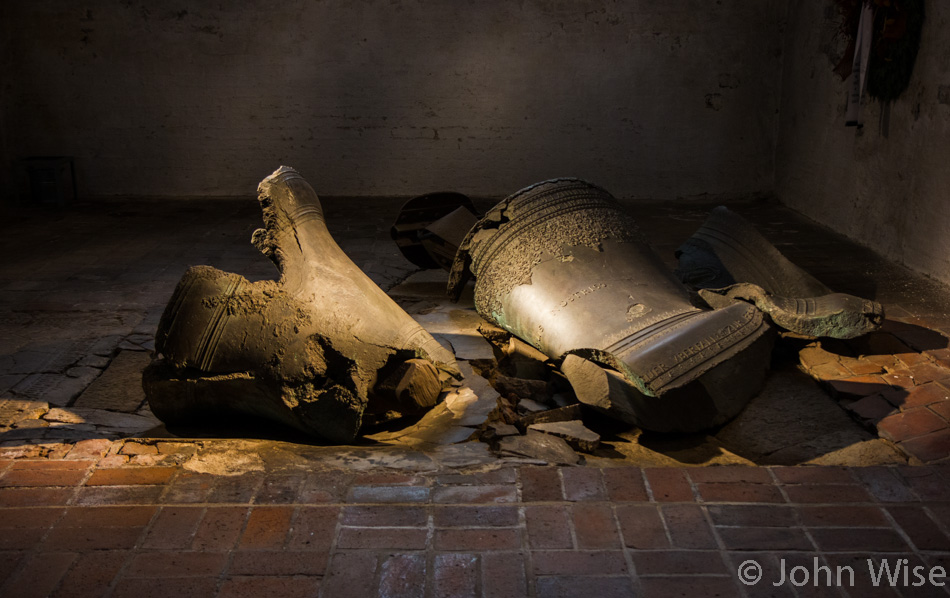

We arrived at St. Mary’s shortly before closing, only fifteen minutes before six, to be precise. The guy at the door waved the fee and allowed us to sprint through the church. Photos would have to do for now to save some memories for later. The circumstances were obviously not ideal for a visit to such an incredible amount of work and history, but as the old saying goes, “It’s better than nothing.”

We didn’t even get 2 minutes in the Rathaus (City Hall) because it was technically closed. While the doors were still open, the last guided tour was finishing up, and we would have to satisfy ourselves with a quick peek at the lobby. How this worked out is that the other day, on the way up, we just missed everything, and now, again today, we’re having a repeat is almost a bummer. What saved the day was that the Niederegger shop was open till 7:00 tonight. If you have to ask what a Niederegger is, well, you then do not know the most famous brand of marzipan in the world.

This ornament was seen on the door to the city hall. The door is one of the last things you see upon exiting the building before spotting the Niederegger shop across the way. Marzipan might well be what Lübeck is most famous for today.

This facade is part of the city hall, and behind it is St. Mary’s Church. There’s a new version of Photoshop on the horizon that might ultimately help with un-wonking the perspective of the building; it is an incredibly difficult place to photograph. Next stop, the world of almond paste; marzipan.

The Twin Tower gate is nearly all that remains of the old city gate. Today it is more famously known for its depiction as part of the Niederegger Marzipan brand. Caroline and I spent nearly 45 minutes in the shop wanting to buy one of everything, but that would likely cost someone hundreds of dollars. It’s amazing how many things can be made from almond paste, and it is all very tempting. We bought gifts for nearly everyone we know, except those of you who didn’t get any. Next time we head off to Germany, let us know you love the stuff, and we’ll be sure to get some in honor of you. I say in honor because the likelihood of it making its way back is slim. All you need to try is one of the walnut marzipan bonbons to know what I mean.

It’s getting late, and this is not where we’ll be calling it a night, so from the tower gate just to the right of this photo of the Trave River, we are heading across town to enjoy the remaining light that still filters through the heavy cloud cover.

Narrow cobblestone streets that curve into the distance are my perfect idea of what a street should look like. There’s never enough time to do it all. Rushing around is less than ideal, but here we are with a few more impressions and the knowledge that Lübeck can easily pull us back to its charm for a return visit. For our overnight stay, we drove south to Lüneburg. About halfway down, it started to rain. Finding an affordable hotel after 9:00 p.m. was a chore. The place we settled on we agreed, must have been one of the top five worst places we have ever stayed in. Anyone who has stayed off Interstate 10 or parts of Route 66 in the United States would know just how bad the place must have been.








